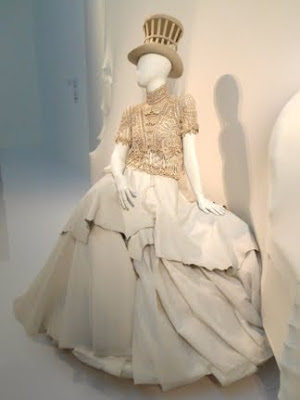 |
| Sittin' on the dock of the bay, photo taken by Colleen's camera and smart watch. Heather, Lauma, Dianne, Michele, Helena and Colleen |
Once again Dianne hosted a wonderful cottage retreat for our text'art group in the Eastern Townships. The six of us mostly pursued our own projects (some of them still secret!) but came together for walks, talks, and great meals.
 |
| Lauma shows how to arrange my efforts to best effect. |
My objective for the three days was to make lots of stamped patterns on cotton, first white paint on black and then black paint on white. I hope to incorporate some of this drama into future art quilts.
The photo below offers a clue as to how those large circles were made.

I used Speedball screen printing paint for fabric, just to try it out. There are lots of other options.
Others involved a stencil, first used as a stencil (upper half) and then as a stamp (lower half). Great way to make use of paint that would otherwise be washed away.
Some stamps can be rotated for effect.
Stamps can be placed in a regular grid-like pattern
or in an alternating grid
or in a random overlapping pattern, like this one made with the end of a thread spool.










































